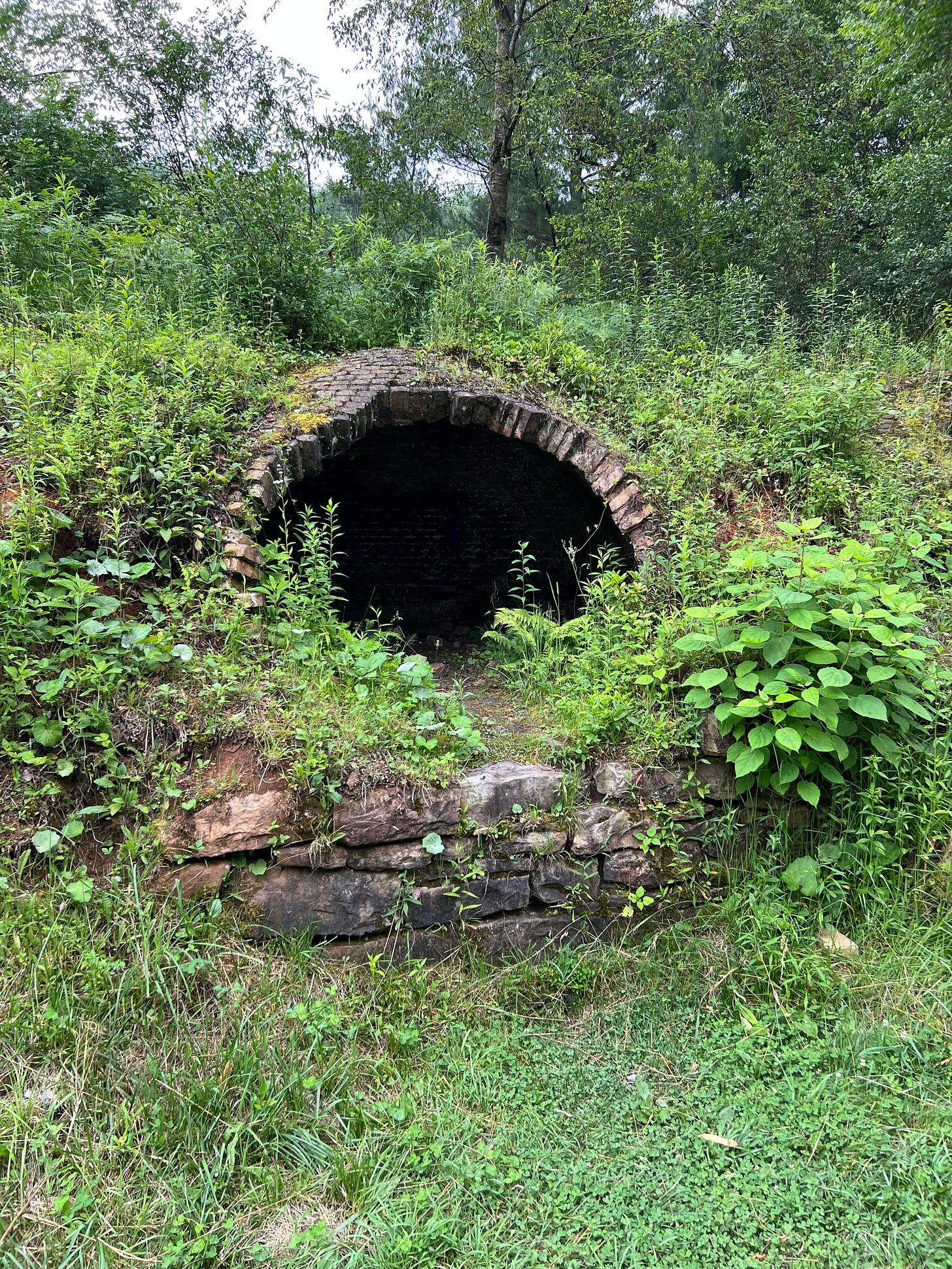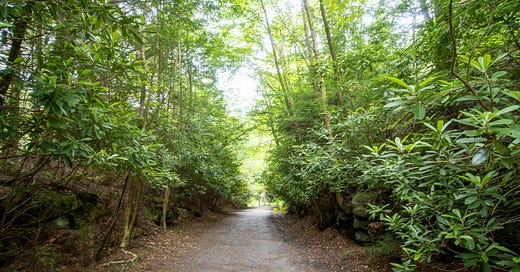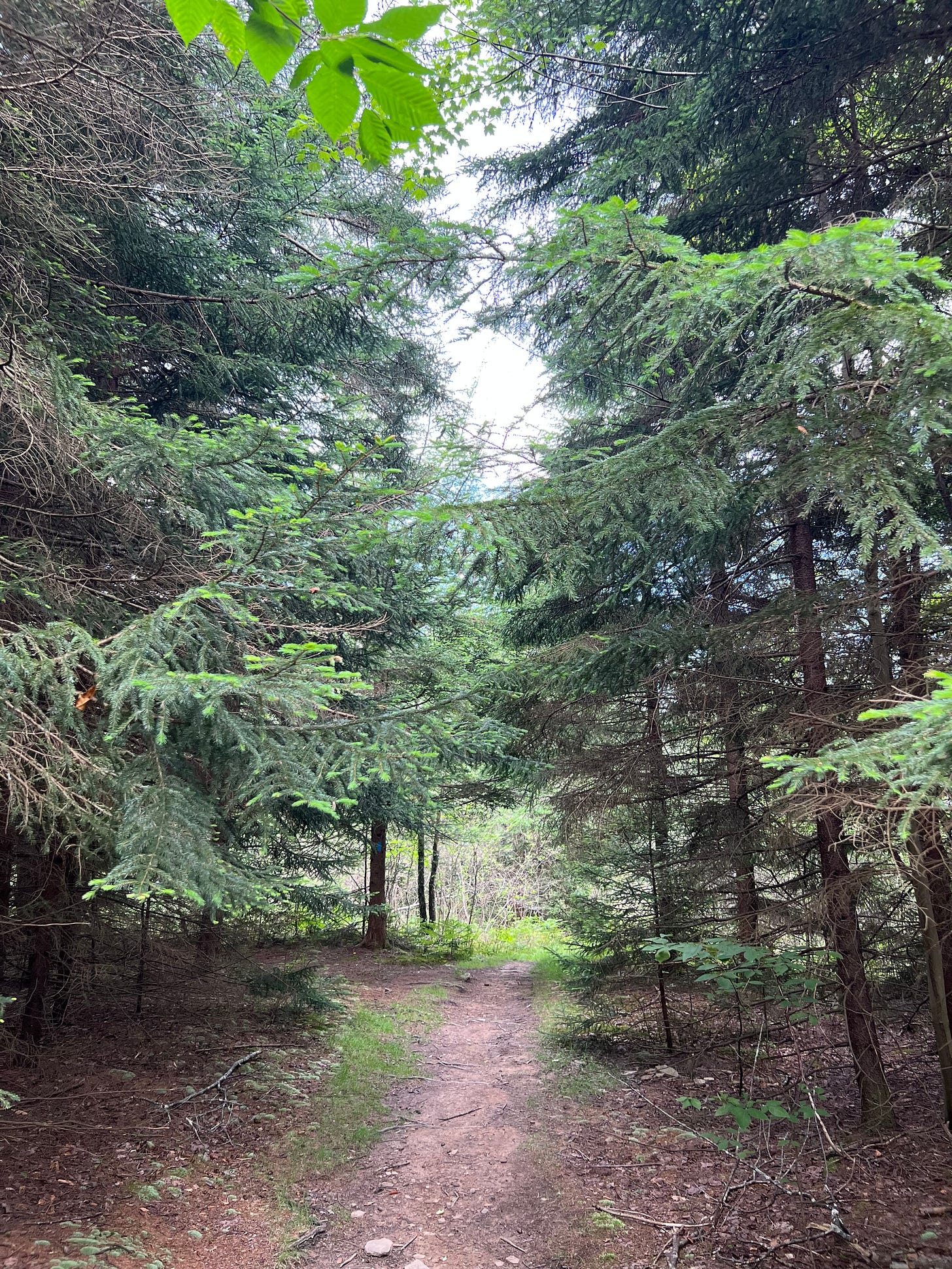If you find your way up I-79 north to US 33 East and from there find the twisty, winding road that is 219, then find yourself driving on some other tiny, curvy roads through picturesque mountain towns, you just might find yourself in a magical place called Blackwater Falls. This gem of a place is tucked away in the Allegheny Mountains of Tucker County, West Virginia and is named for the 57-foot cascading waterfall that forms where the Blackwater River flows into the rugged Blackwater Canyon. The water of the Blackwater River gets its not-quite-black-more-amber hue from the tannic acids of decaying hemlock and red spruce needles released into its drainage basin. There is no easy way to get here, this place of deep coniferous woods and secret waterfalls, but the drive is part of the experience and the destination worth the travel. It just so happens that I spent last weekend ensconced in this lovely place, there for a conference—the West Virginia Master Naturalist Conference to be specific. Though I spent most of my time while there on guided hikes and in learning experiences, I was reminded how unique this region of my home state is and hope to make it back soon when I have more freedom to explore.

Blackwater Falls is a place well-familiar to me—a place of childhood memories, stitched into my story the way faded thread passes through the squares of an old family quilt, almost invisible but holding it all together. This region of West Virginia is a part of what makes me … me. But visiting this mountain place of forests and high plateaus as a grown-up is entirely different than it was as a child. Especially when viewed through the eyes of an aspiring naturalist.
To listen to this post (and some Bonnie snores):
Most of the classes I signed up for were “outdoor classroom” experiences. There were plenty of “sit-down” learning opportunities at the conference (how to tie knots, build a bat house, nature journaling, nature photography, identifying wild orchids, identifying mushrooms and fungi, compass and topographic map basics, and so, so much more), but many of those courses were classes I’ve had in the past, so I opted for some experiences with boots on—hiking boots to be exact.
The first morning was spent hiking to Douglas Falls, a 35-foot tall spray of water from the North Fork of the Blackwater River. The through hike is on Rail Falls Road, a pitted, gravelly mess of a road that contains the remnants of 400 coke ovens used by Douglas coal miners in the late 1800s-early 1900s to transform coal into coke—a charcoal-like substance used to fuel the nation’s steel mills. We learned about the environmental impact of the coal industry on the area and the restoration efforts that have made the region a mecca for diverse wildlife and flora. The story of which will break your heart more than once.

In the afternoon we went on a hike with the Blackwater Falls naturalists that explored the uplands coniferous forests. We learned some tips on identifying hemlock, red spruce, and balsam fir (which I need to review). When we hiked out, the temps were in the mid-eighties and there was a threat of a summer thunderstorm, but how refreshing it was to stand in the shade of a copse of hemlock growth, scent of spicy needles in the air.
The next day I participated in an all-day hike in the Dolly Sods Wilderness and Bear Rocks Preserve. The diverse habitats of bogs, plateaus, and rocky outcrops made for a fascinating hiking experience. Our hike was led by local botanist Alyssa Hanna, and her enthusiasm for the various flora we encountered was contagious. One of the highlights of this hike was walking through walls of blooming mountain laurel. The air was filled with the pure, sweet scent of the blossoms and it felt like a wedding feast. The pictures don’t do justice to the beauty of the plateau bursting in bloom. Alyssa also let us “discover” the famous Tree-of-Life often sought and photographed in Dolly Sods. The mythology is that one must not be told how to find this mystical tree but must discover it on their own. We kinda sorta did.


In-between and pervasive through all the hikes there were birds. It was a heart-ache not to be following and photographing birds every second of every hike, but I was there for CEUs and specific directives, so I had to exercise self-control. I did not have my zoom lens with me, as it was too heavy to carry, but I did take my binoculars and was rewarded with glimpses of common yellow-throated warblers, black-throated green warblers, dark-eyed juncos, chipping sparrows, various woodpeckers, magnolia warblers, golden-crowned kinglets, cedar waxwings, black-and-white warblers, red-eyed vireos, ovenbirds, and blackburnian warblers. The songs of hermit thrushes followed us everywhere, which was a magical thing that felt out of a fairytale. I also saw my first black-billed cuckoo—a fledgling a young man thought he was rescuing. We advised him to put the little bird back where he found it so the parents could tend it well.

The final morning of the trip was spent on a “Mindful Nature Experience” hike with the founders of Wonder and Grow, a nonprofit dedicated to encouraging people to experience the transformative power of nature. This may have been my favorite. Granted, it was the end of the weekend and I was tired and sore from so much hiking, but the slow, deliberate way we moved through the forest on this hike was such a gift. We participated in several exercises designed to engage all of our senses and awaken a deeper part of our brains to heighten our observation skills. My favorite exercise was called “fox walking.” We were encouraged to take off our shoes and walk barefoot along the muddy trail, keeping our gaze focused ahead and using our periphery vision to guide our footsteps. This required slow, deliberate steps and astute attention. I found it made me want to walk gently wherever I go, mindful of what is beneath my feet.
There were so many more moments of light scattered throughout the weekend. I hope I haven’t bored you by sharing these few here. One thing I hope this post does is encourage you to seek out similar experiences. Most states have their own Naturalist Programs, and I cannot say enough positive things about my experience with ours. Learning about the natural world is changing me, deepening awareness of my responsibility to care for our wild lands and giving me a greater sense of belonging to this world. Maybe I’ll say more about that in future posts. After this weekend of breathing mountain air and scent of mountain laurel, I feel like I’ve been cleansed from the inside out. It sure feels good.













"I feel like I've been cleansed from the inside out..." and now I do, too. Thank you for this mini-retreat, Laura! Your words and your photos--and your enthusiasm for all of nature--are gifts for us today.
The mountain laurel is beautiful; I've found, though, it doesn't seem to last long when cut and put in a vase.
Lovely adventure for you.